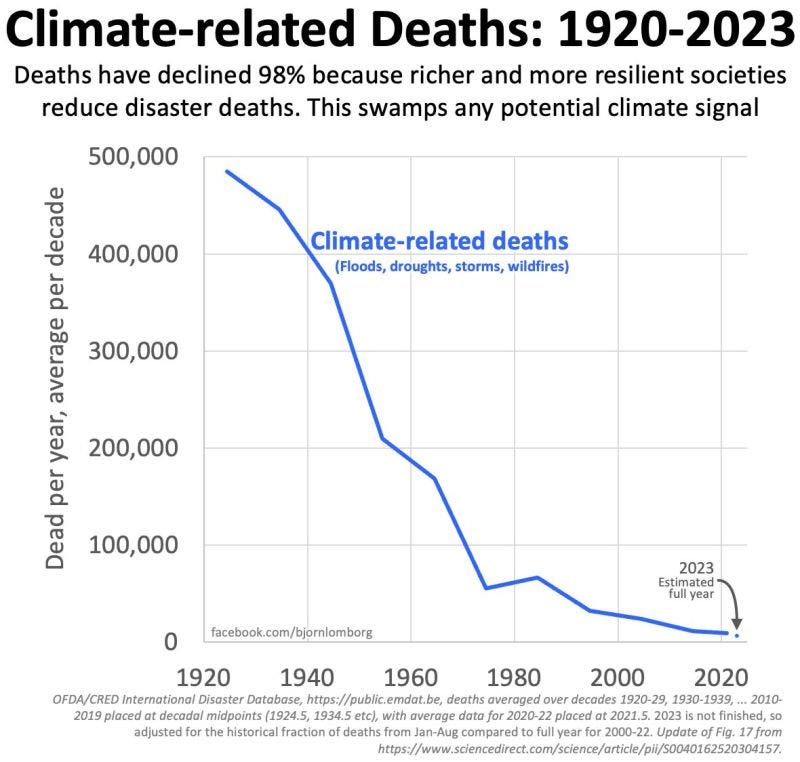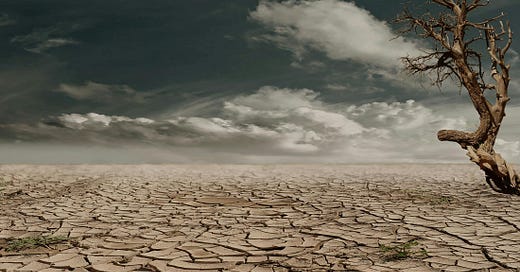6 fake "facts" people still believe about climate change
The science isn't as settled as we think
The internet is full of misinformation, from deliberate conspiracy theories to harmless but phony “facts” people somehow still believe. You’d think, with universal public education and all the knowledge in the world immediately accessible right in our pockets, we would know better than to believe that gum stays in your digestive system for seven years, or that toilets flush the opposite direction in the Southern Hemisphere, or that copying and pasting a Facebook status will override legally binding terms and conditions. Alas, reason doesn’t appear to be the hallmark of the 21st Century.
These internet misconceptions are even more pervasive when it comes to climate change — and instead of being silly, they’re downright dangerous. The radical leftist agenda depending on our blind allegiance to so-called “settled science” threatens to destabilize our energy systems, economy, and even national security.
We can do better.
Here are six falsehoods that sound true but aren’t — the “fake news” people still believe about climate change.
1. FALSE: Humans caused global warming.
Numerous surveys of long-term historical weather data have disproved the claim that the world is hotter than it’s ever been. This myth stems from misleading temperature timelines that only go back a few conveniently cherry-picked decades.
In fact, a new study out of Norway shows that human activity doesn’t have a meaningful impact on the climate at all. The earth is currently in an “interglacial period,” which is a period of warmer than average temperatures spanning 10-15,000 years. This is not unusual. Each of the four previous interglacial periods were considerably warmer than today.
Contrary to the entire concept of manmade climate change, the researchers write, “the effect of man-made CO2 emissions does not appear to be strong enough to cause systematic changes in the temperature fluctuations during the last 200 years.”
Paleoclimatologists now believe that CO2 doesn’t drive temperature, but vice versa. Research suggests CO2 concentration spikes lag temperature changes by about 800 years.
2. FALSE: Global warming is dangerous.
While global average temperatures have risen slightly over the last few centuries, there is no evidence to suggest this change has resulted in any harm to humans or the environment.
Climate-related deaths have plummeted 98% in the last 100 years, even though the world’s population quadrupled during that same period. While the earth is experiencing a period of mild warming, our resilience is improving at a much faster rate. In fact, deaths due to climate-related disasters are declining faster than deaths from other natural disasters like volcanic eruptions and earthquakes. It’s clear from the data that the weather isn’t the culprit here.

In fact, cold is far deadlier than heat. Global mortality data shows nearly 10 times more people die from cold than heat exposure. It’s a deadly reality Europe is learning the hard way as cold-related deaths are spiking as energy prices soar due to government spending on unreliable renewable energy sources and all but banning reliable, affordable fossil fuels.
3. FALSE: Natural disasters are becoming more dangerous.
As mentioned above, 98% fewer people die every year from climate-related disasters than a century ago. So what’s with all the doomsday headlines about hurricanes and wildfires?
Hurricanes and floods are becoming more expensive — but not more lethal — due to increased coastal development. As society evolves, cities develop more densely, and more people move to coastal regions, it understandably becomes more expensive to repair high-end buildings and infrastructure.
But the number of hurricanes that have made landfall in the United States each year since the late 1800s has been quite stagnant. Since the 1930s, the 36 costliest U.S. hurricanes clearly represent a downward trend in intensity.

Droughts and wildfires have also occurred at normal levels over the past several decades. The continental United States has actually experienced considerably wetter weather than usual, not drier. Any perceived increase in wildfires, particularly in California, is more likely due to poor forest management practices and missed power line safety upgrades.
4. FALSE: Carbon dioxide is pollution.
“Carbon pollution” is the newest buzzword for the climate cartel, but carbon dioxide isn’t a pollutant. It’s a harmless, inert gas that occurs naturally in our environment and represents just a tiny fraction (about 0.04%) of our atmosphere. CO2 would have to be 75 times higher to present any danger to human or animal life — and no amount of human activity could produce such an absurd imbalance.
Far from harming anyone, mild increases in atmospheric carbon dioxide actually help ecosystems and agriculture by stimulating plant growth, a phenomenon known as “global greening.”
On a related note, many activists and media outlets have lazily abbreviated carbon dioxide to just “carbon,” conjuring images of black smoke being pumped into the atmosphere. Nothing could be further from the truth. We regularly ingest carbon dioxide in the form of soda and sparkling water; it causes no physical harm or pollution.
5. FALSE: Renewable energy is cheaper.
Door-to-door solar salesmen and misleading YouTube ads claim that renewable energy is cheaper than ever. If it sounds too good to be true, it is.
Wind and solar power have enjoyed hundreds of billions of dollars in taxpayer-funded subsidies in the naive hope that they just needed a little boost to kickstart the technology. But after all that investment — which you and I, not the government, are paying for — renewables moved from 3% to just 4% of our nation’s energy.
The problem is simple: the wind doesn’t always blow, and the sun doesn’t always shine. Even when weather patterns can be predicted, peak wind and solar production rarely line up with peak electric demand. The only reason wind and solar exist on our grid is the absurd imbalance of subsidies giving these unreliable energy sources an unfair advantage over the generators that can be relied on no matter the weather.
In fact, they’re so heavily subsidized that wind in particular can often pay the grid to take its power and still make a profit. It’s no wonder natural gas plants are closing. How could any company survive when its competitors, even if their products are inferior, can pay their customers to take it? Without subsidies and fossil fuel backup, wind and solar are utterly useless to the grid.
But what about battery storage, you might ask? Wouldn’t storing all that extra power from windy and sunny days solve all our electricity woes? Not so much. The entire battery storage capacity installed on the grid worldwide wouldn’t be enough to power New York City for a single hour.
6. FALSE: Methane is the climate’s nemesis.
Environmental activists have labeled methane a “super pollutant” — when it is neither a pollutant nor particularly concerning — because each molecule traps heat in the atmosphere 25 times more efficiently than CO2. That might sound scary, but what they purposefully do not say is that methane is 200 times more dilute than CO2 in the atmosphere and is emitted at 1/200th the rate.
If the United States eliminated all its methane emissions by 2050, the effect on global temperature in 2100 would be a mere 0.03 degrees Celsius. This is less than the margin of error in our measurements of global temperature. In other words, the environmental benefits of eliminating U.S. methane emissions entirely can’t even be measured.





I’d like to keep this article in my back pocket to whip out whenever a “climatista” starts spouting off.
P.S. Gulp ~ I am guilty of having believed that toilets flushed in the opposite direction in the Southern Hemisphere. 😬
Thank you for the facts. This should a bookmark to show people, especially leadership disrupting our lives.